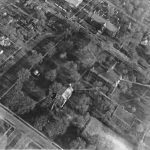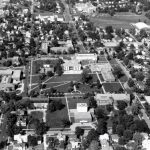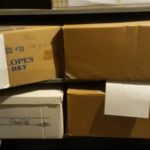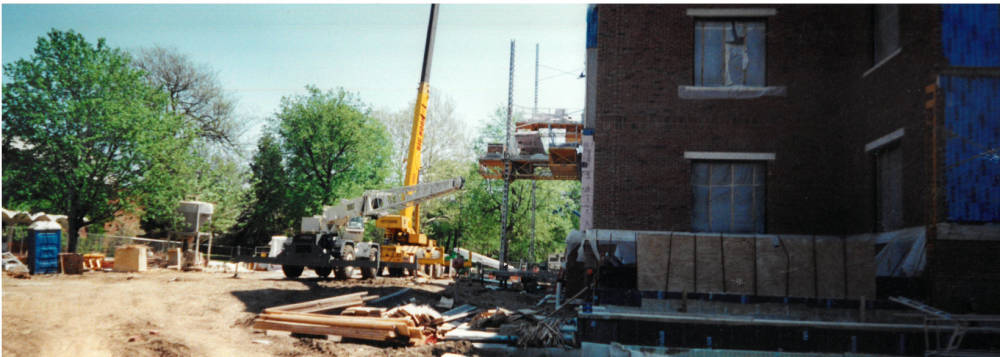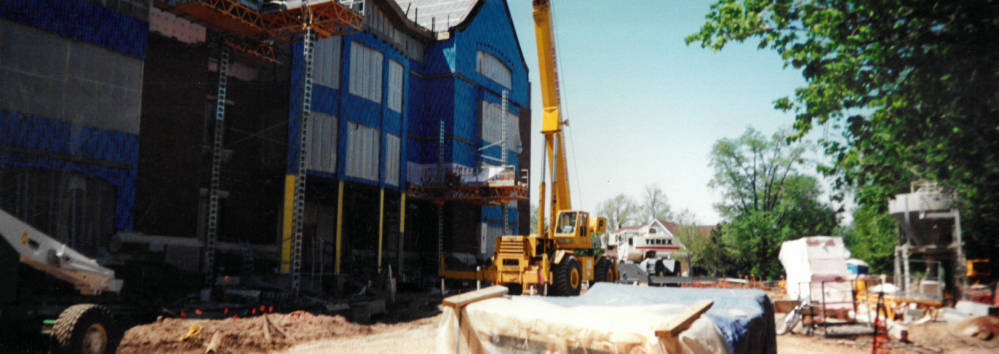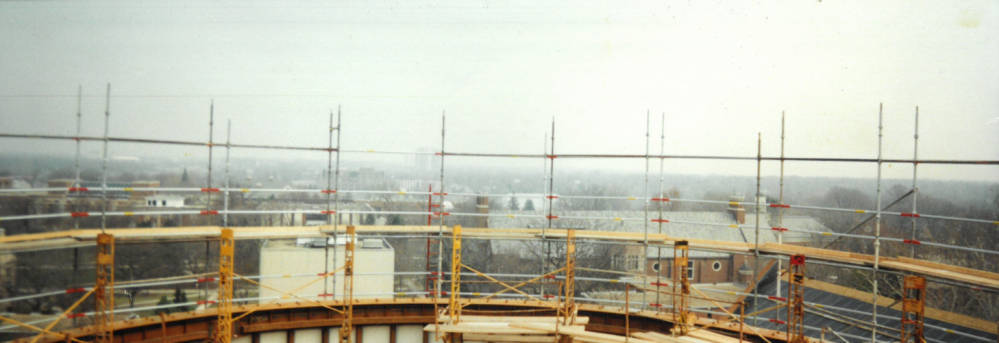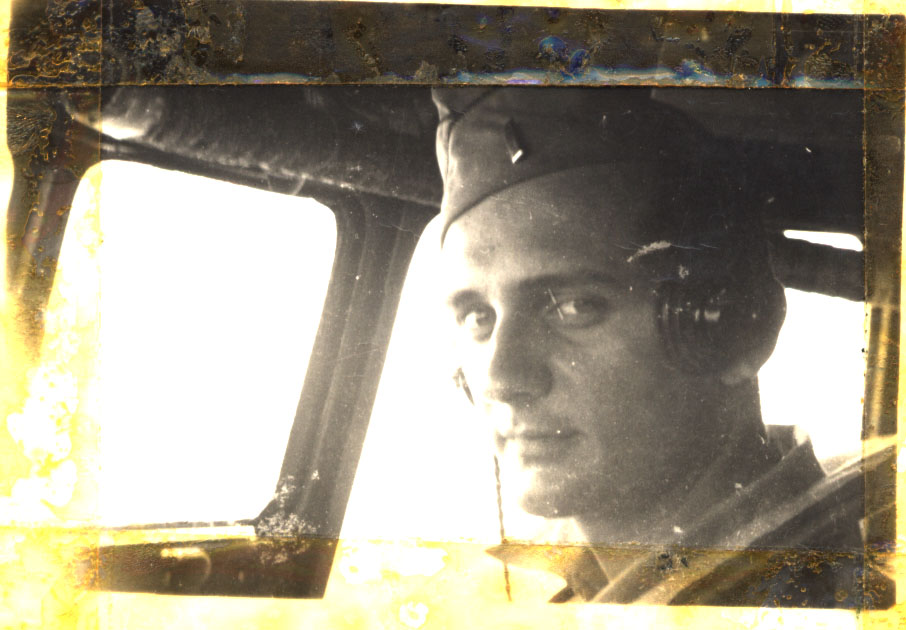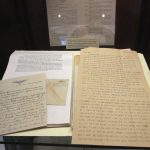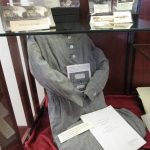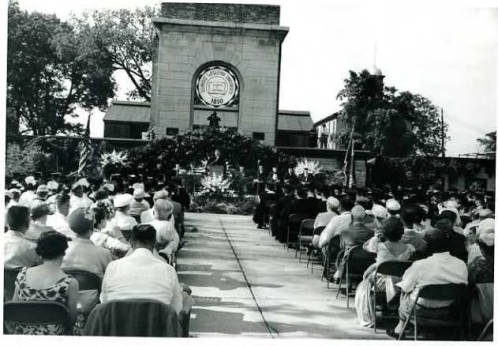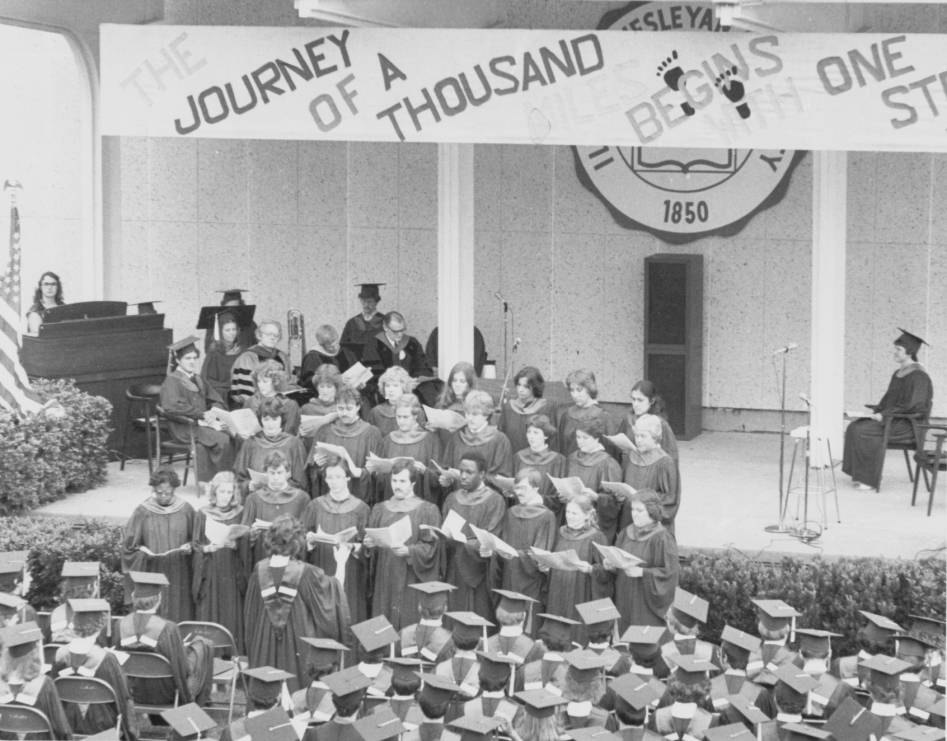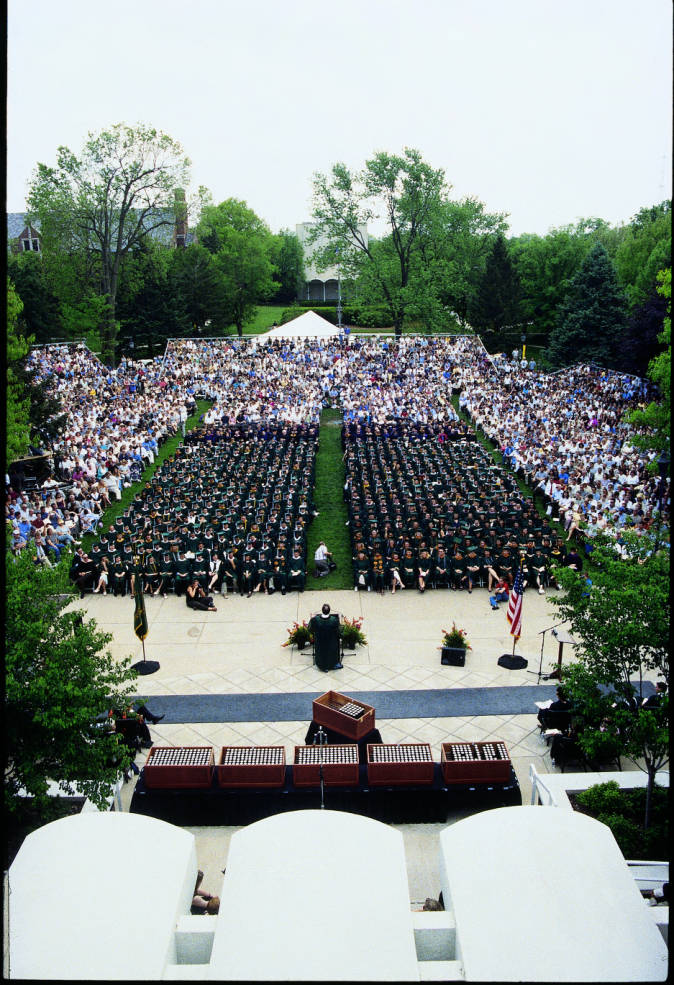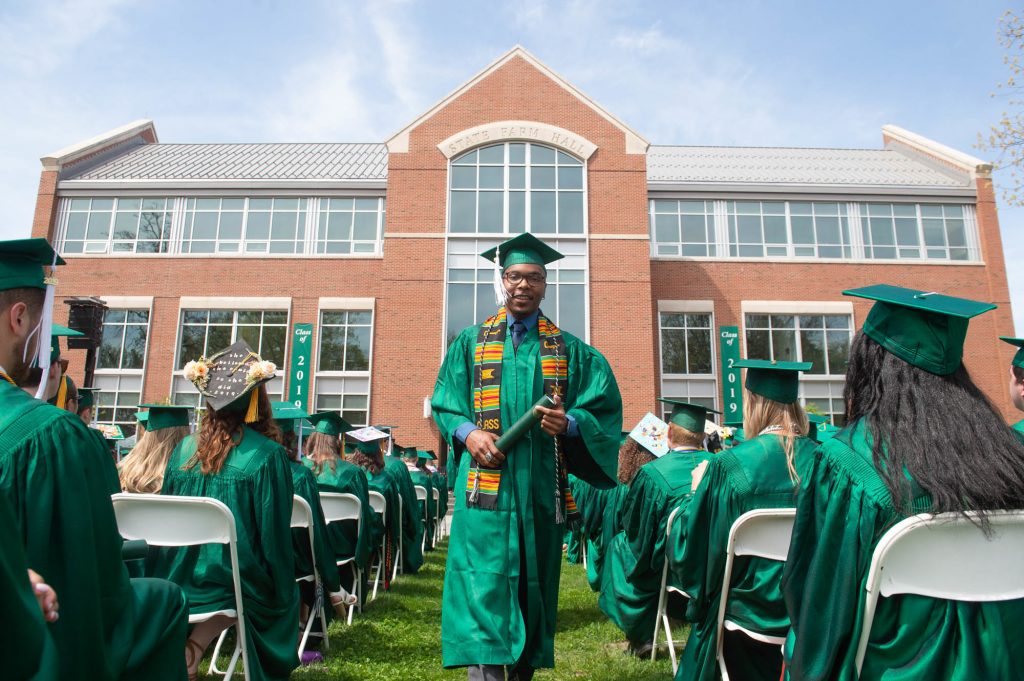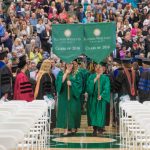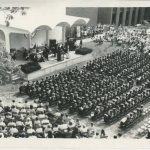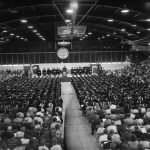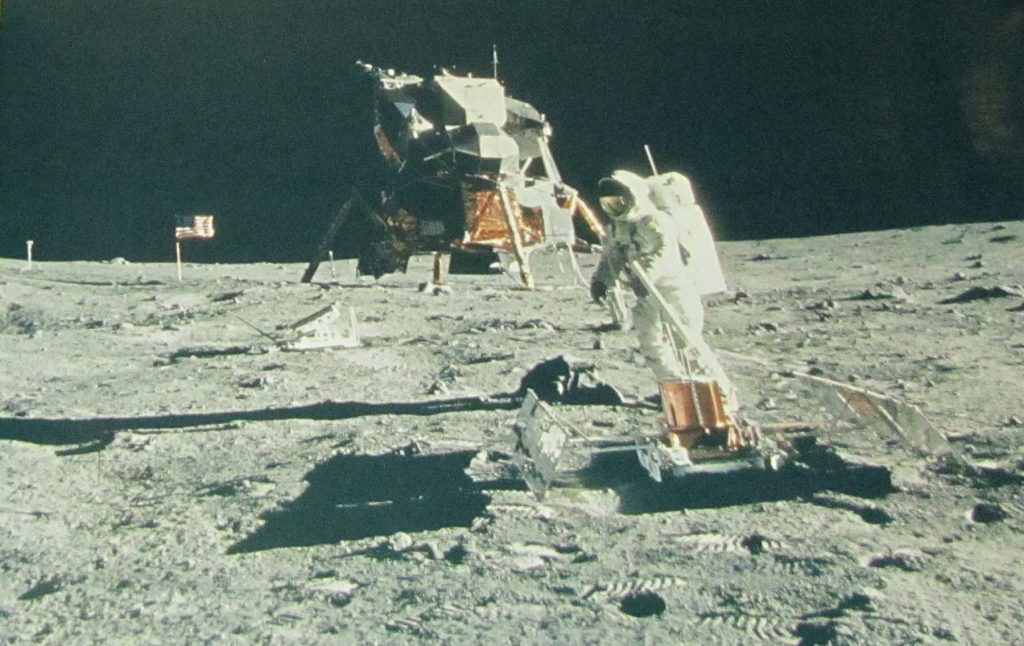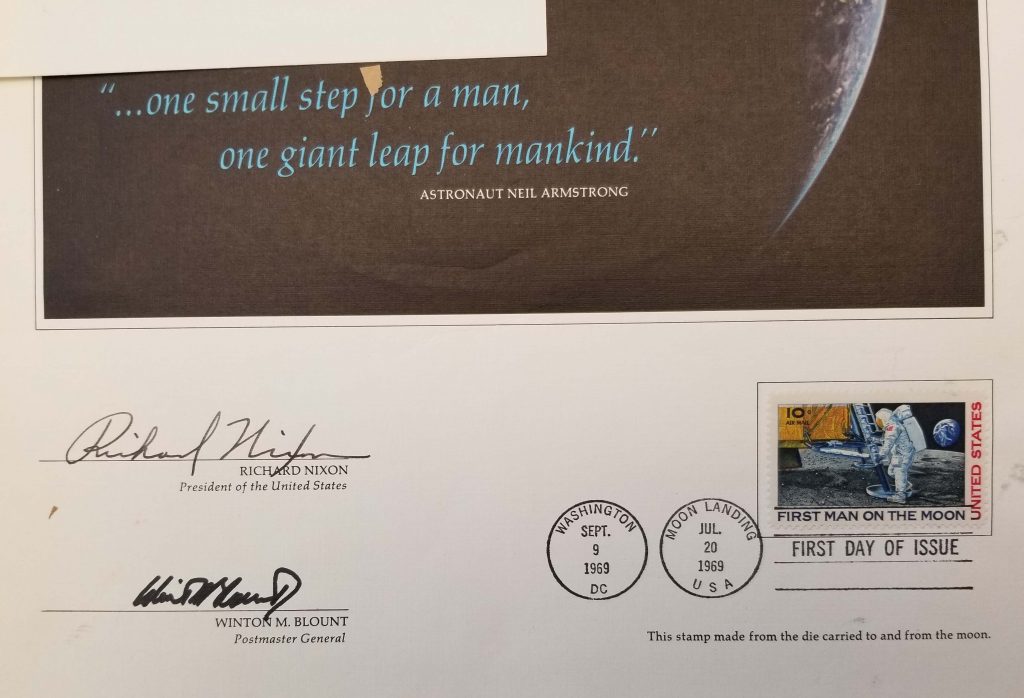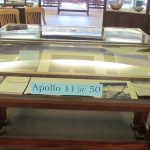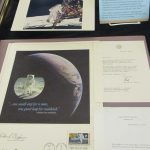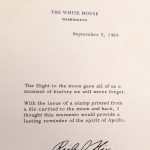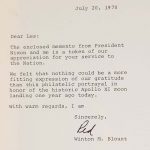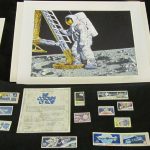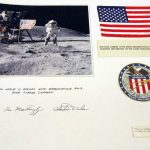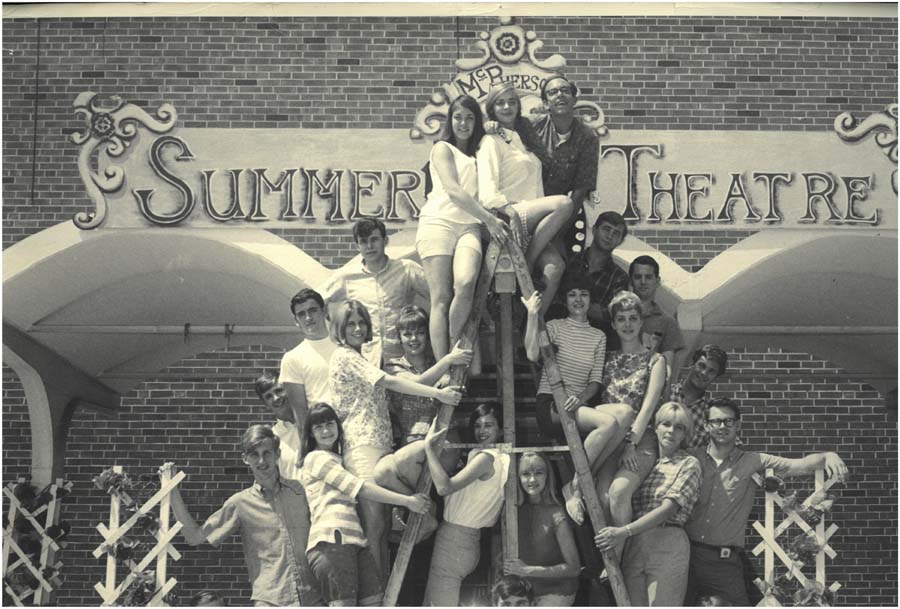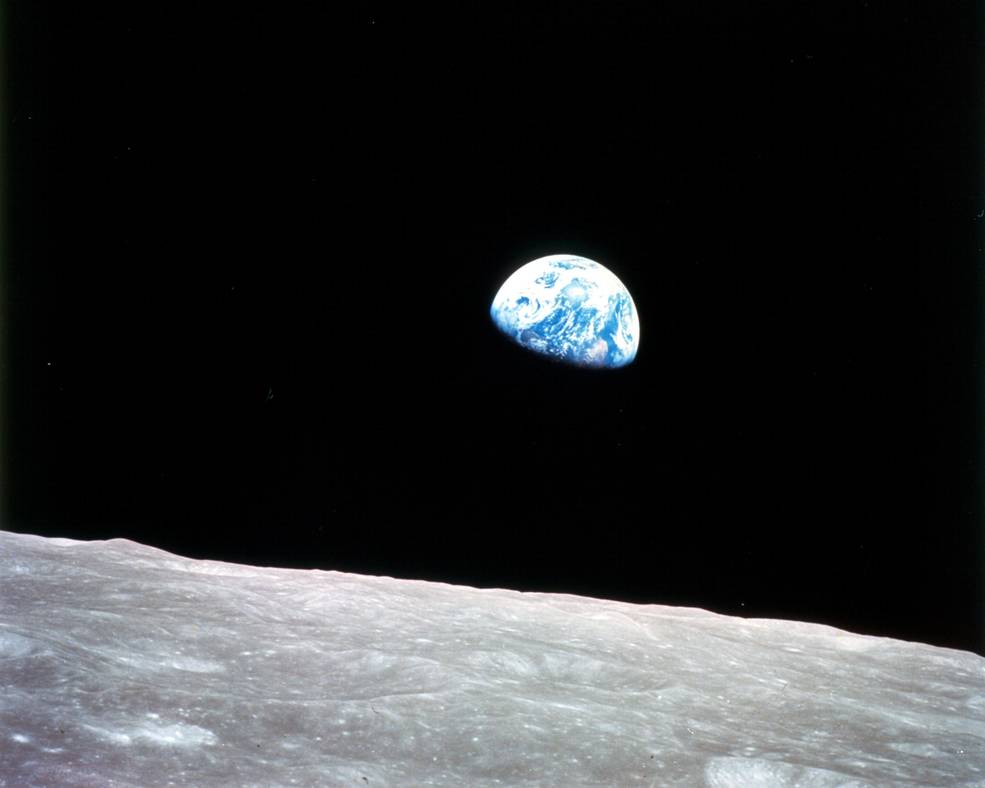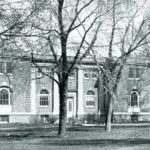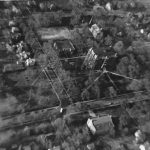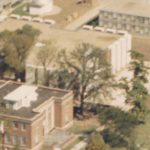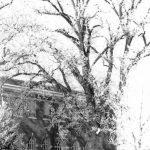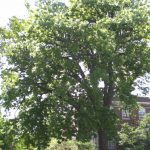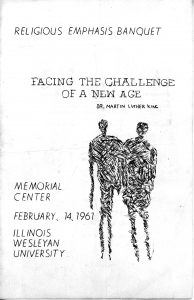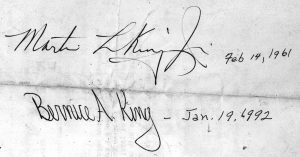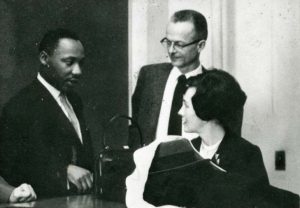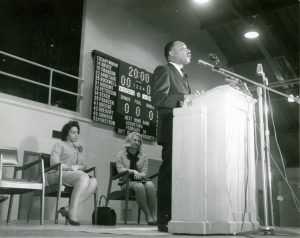The first building erected on IWU’s campus is referred to as Old North and was built in 1856. The purpose of this post is to clarify confusion about its location on campus.
People often say that it was located where State Farm Hall is today, but it was actually to the East of that and would have stood even a bit East of what is now the sidewalk leading to the entrance of the Center for Liberal Arts (CLA).
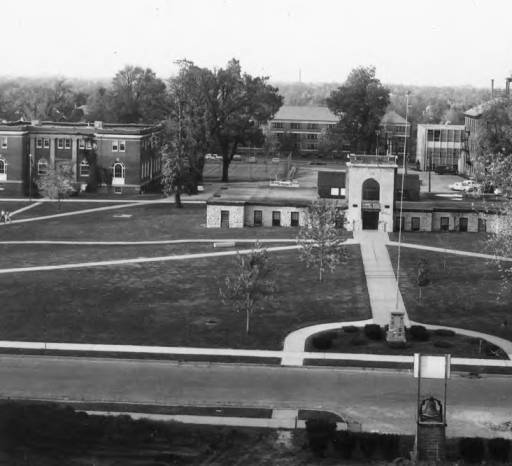
Quad Duration Hall. Approximate date 1964 or ’65 due to presence of Old North on right and Sheean not yet started.18-1/17 Aerial Photographs
This can be seen in this slightly elevated view of the Quad (likely taken from the top of McPherson Theatre), when it still held the building known as Duration Hall. Only part of Old North is visible in the upper right of this view, but the shorter building beyond it is what we now know as CLA. Before the remodel that transformed the facade it was called the Sherff Hall of Science. You can also clearly see the dorm we call Magill beyond that. Looking fro the same point of view today, State Farm Hall would block that view of Magill.
To further orient yourself, the street in the foreground is now a sidewalk, but the Hedding Bell and Powell Monument with flagpole are in the same location today. Duration Hall was actually the foundation of IWU’s second building, originally called the Main Hall/Old Main and later renamed Hedding Hall in honor of IWU’s commitment to the alumni of Hedding College when it closed in the 1930s.
Below are three aerial views of the Quad: two with Hedding in the center, on the south side of the East-West sidewalk from where State Farm Hall is today. Note the location of Stevenson Hall (aka, the School of Nursing), built in 1910, and the long sidewalk leading to the entrance of Hedding Hall. Use these as a reference point in the photo above and the one on the left below. Note also the position of Old North in the first and second photos below. The third photo clearly shows the sidewalk leading to the empty space once occupied by Hedding Hall and on the North side of the E-W sidewalk is IWU’s first free-standing library, called Sheean Library. It was in use from 1967-2002, when Ames Library opened, but it remained in that location until it was demolished in 2011 and replaced by State Farm Hall, which opened in 2013.
- IWU ca. 1933
- Aerial view of campus from the north, ca. 1933. (click all to enlarge)
- 1970 campus aerial view prior to Quad redesign
In the aerial photo below, it is clear that the only thing in the footprint of Sheean/current-day State Farm Hall was a short drive to an expansion of the parking lot that probably served Old North, Old Main, Stevenson and the tennis courts north of Stevenson.

1949 aerial with parking lot north of Duration Hall and adjacent to Stevenson with short drive connecting northeast to Old North.



